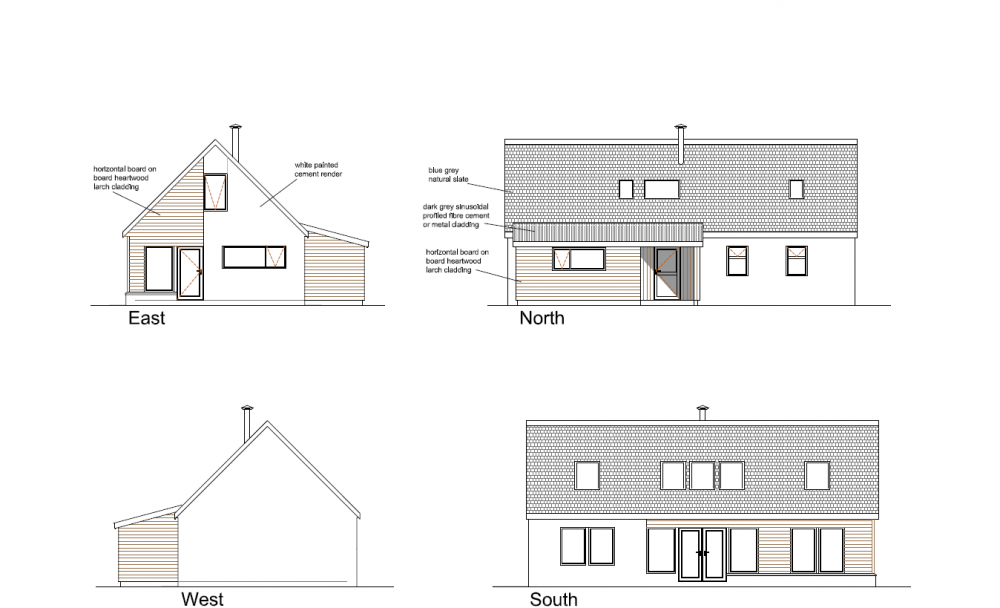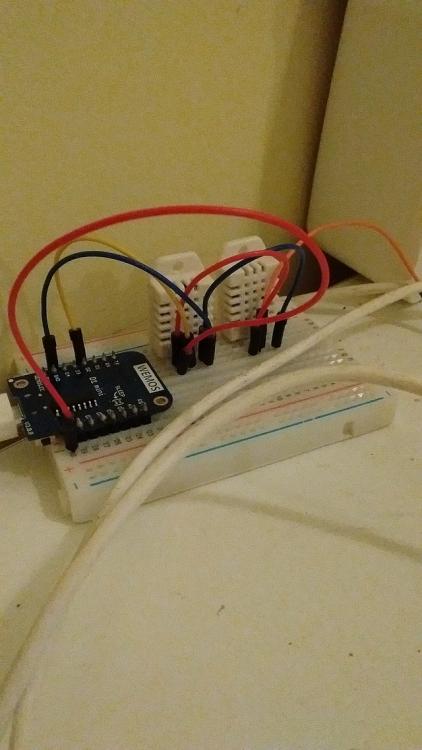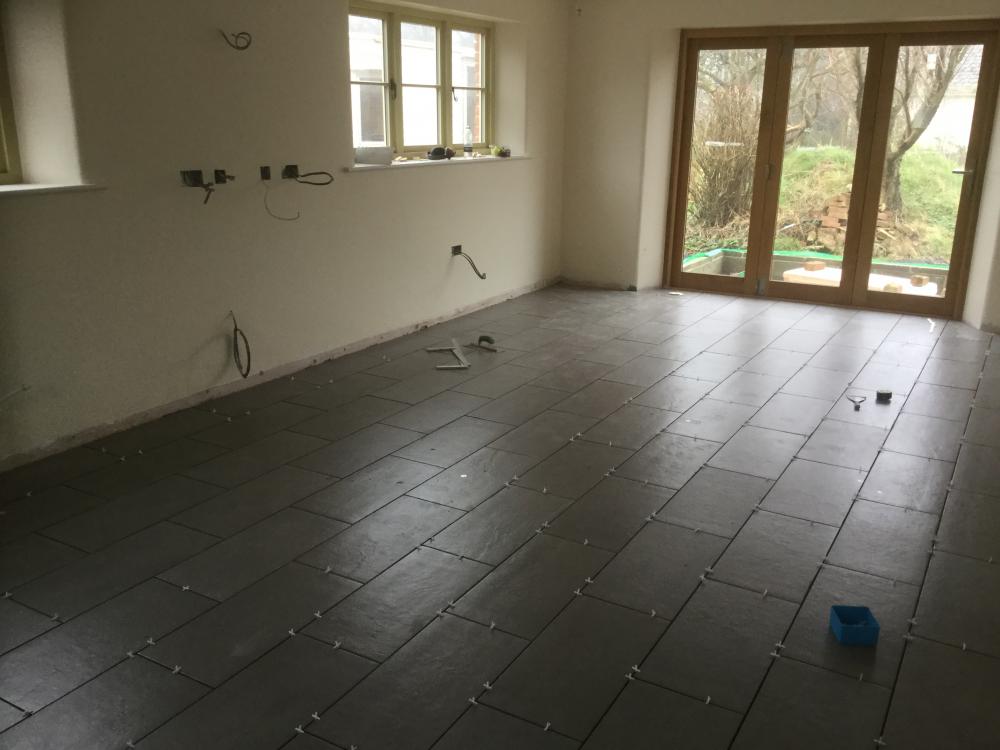Leaderboard
Popular Content
Showing content with the highest reputation on 02/19/18 in all areas
-
They don't, they leak like sieves usually. One of ours here in Salisbury that I fairly regularly use always has big puddles on the lower floors from leaks, plus it is now growing what look like stalactites from every joint in the concrete, where the water is dissolving carbonates from the concrete and redepositing them as stalactites.2 points
-
Bloody Hell. ...its starting to sound a bit Voodoo here, stumbling around the block paving all poking each other with birch twigs I am presuming though if this is a spur there ...then it definitely wont have anything running in it ...So even if i hoped the "powers" were with us on the day ...I fear we would be on a loser .... I have ANOTHER drainage guy coming tomorrow ...Lets see what he can tell us ...They are all keen to get the job, only too happy to pop by with 2 hooks and a torch . but once the "spur" is mentioned it normally goes quiet and before you know it ...the BMW is back up the road and they havent even finished their brew I have learned one thing today .... I have to be careful next time i order some drain rods online !2 points
-
2 points
-
After nearly a decade since our outline planning went in almost ready to start! Building warrant signed off in February Valuation of site and proposed house done on Thursday Self build insurance purchased Self build mortgage required site insurance and valuation before being finalised and that's now done, so should have this sorted next week. I can't really think of any other preliminary work to do? Need to look for scaffolding, a shed/container and producing a list of materials.1 point
-
Well..its a bit like columbo folks ..but this time we don't know the answer in advance ...but there is plenty of "just one more things" We got in touch with Anglian waste water to connect our aging in-laws up to the main sewer .. (house on map below with red dot) ..and they sent us this very plan. Connect to 5901 they said ...which is a fair way away ....they dont do the work themselves they have a list of contractors ...and so i got one out for a quote you don't want to know ...honestly! that manhole is 3 metres deep and has a ladder down it ...Apparently we would need to come in at invert level and so the digging and the fitting of a manhole on my in-laws land is like 6 figures Bang! So while he was there he noticed their neighbours (green dot) have a manhole in their drive, so he had a peep and it IS a sewage mahole !!! ....but rather than going to 5901 ...it appears to be heading to 6901 Now the current owner knows nothing of how the house got on mains sewage, but there is a legend, rumour, call it what you will that all these houses have a "spur" in the drive way ...which in his case would make sense as the road doesnt look dug up. So i got advice to get a CCTV camera shoved down it ...but after several phone calls I was told that the rod cameras will only go one way ? and that if the neighbour is on some type of lateral? ..with spurs? then they probably wouldnt get to see it ..so it would be a waste of £200 apparently there are "crawler" camera and ones with prehensile sections ...but these are "mad money" and only large contractors or the water board themselves have access to this technology ....(i bet even Area 51 dont have it) So there you have it ...do you guys think my only alternative is to get on the old "banjo and barrow" or do i sell my car to we buyanycar, the wife to Harvey weinstein and pay potentially 15k1 point
-
I am looking to see what MVHR units could suit our 120m² house and am being drawn towards the Xpelair Natural Air 180. One feature that seems to set it apart from others in this price bracket (~£1k) is the use of constant volume fans. These, if my understanding is correct, are fans with a known relationship between RPM, current draw and flow rate thus enabling closed-loop control of actual flow rate in real time despite varying external factors. Sure enough the controls for trickle, boost and purge rates on this unit are all set in m³/hr rather than RPM or %power. This sounds like a useful feature to have, not only for initial commissioning to make the whole-house supply vs extract rates balanced but to also help ensure the desired performance levels remain constant over time despite gradual filter fouling, varying wind pressures etc? I am assuming that the ability of the unit to keep supply and extract rates balanced may also aid efficiency if (or, rather, given!) my house is likely far from airtight by helping minimise pressure-induced air ingress/egress via routes other than the MVHR? I am wondering what the panel's views are of constant volume fans and whether they are a worthy differentiator between competing products or am I better off remaining focused on other aspects of a unit's specification e.g. efficiency, noise etc? Does anyone have experience of the Xpelair 180 in particular?1 point
-
1 point
-
Think your going to have to get the kango bit sharpened up. Get 2 45 bends and put them together. You might need a small length of pipe in between the 2 bends maybe 5-7 inches long to get you in the correct position. When you have it made up mark on the wall your FFL and set your pipe and see how much you need to dig out. Make sure you dig enough out so the bend is pushed fully home and cut and file the pipe coming out of the floor as you don't want a rough edge that could catch a brown trout on it's way out to sea.1 point
-
How are you getting on with the WEMOS I have managed to get mine connected to my router, then access via WebREPL or a USB Serial connection on PuTTY. It reads the DHT22s ok as well. That is as far as I have got. To connect to the router, I modified the boot.py file: # This file is executed on every boot (including wake-boot from deepsleep) #import esp #esp.osdebug(None) import gc import webrepl import network import dht import os import machine webrepl.start() gc.collect() def do_connect(): import network sta_if = network.WLAN(network.STA_IF) if not sta_if.isconnected(): print('connecting to network...') sta_if.active(True) sta_if.connect('XXXXX', 'XXXXX') while not sta_if.isconnected(): pass print('network config:', sta_if.ifconfig()) Next is to work out how to get the Wemos to send temperature data to a network drive. How much 'stuff' and you put into the boot.py file, or is it best to use a main.py file (think that runs at boot too) and use the os commands to run separate micropython files1 point
-
If the bubble is in between the two lines, pukka spot on jobs a goodun dogs danglies good enough she’ll be right mate.1 point
-
I had a soil survey done on the new site last week and it confirmed that we're on mostly clay; the results have been sent for analysis to find out whether it's shrinkable or not. The new house will be next to a lane and separating the curtilege from the lane is a double hedgerow. The arboricultural report stated that we should keep the inner hedgerow in place during construction as sacrificial root protection for the outer hedgerow, and then remove it once everything is done. However, the soil chap said that the inner hedgerow should be removed ASAP and, in particular, before it starts coming back to life in the spring as it's mostly hawthorn and will be very thirsty, which will make construction difficult on the clay ground after it has sucked all the water out of it. So, ideally, I'd like to get a digger in there ASAP to drag out the inner hedge, but don't want to fall foul of the PP conditions. Currently, development and everything is waiting on a licence from Natural England to do a supervised, soft demolition of the roof as it's a confirmed summer roost for bats. We should have that back by mid March. Any suggestions as to a course of action that won't jeopardise the new house or the planning people?1 point
-
I'm looking for a brush on sealer for internal brick work, colourless and clear. Any recommendations. Cheers1 point
-
1 point
-
90% of downstairs done, growth in kitchen confirmed as roots from various trees growing in the masonry and not dry or wet rot. Library started yesterday but L&P ceiling is falling down in chunks so today I started on the stairs and landing!1 point
-
Congratulations on getting thus far. Give me a shout if you're looking for any contacts or advice1 point
-
Being strictly accurate, there is no "pass" or "fail" as such, but in order for the house to meet the requirements, and so be signed off by building control, the Dwelling Emissions Rating (DER) must meet or exceed the calculated design stage Target Emissions Rating (TER). The TER and DER is calculated using the combination of the fabric standards (which must not be less than the minimum in Part L1A), airtightness, MVHR (if fitted), fuel type, any renewable energy elements, so is a balance of all these factors. The DER is calculated using the "on construction" details, to account for changes that may have been made between the design stage (when the plans were approved by building control) and the completed dwelling. It's worth downloading and playing with the free version of Stroma FSAP to get a feel for how it works, as that does flag up non-compliance at the element level with red or green fail/pass indicators. The SAP worksheet is quite complex, and includes climate related weightings, to allow for things like solar gain variation and heat loss variation over a year. The ratings are calculated by summing the monthly means of pretty much every loss or gain. Attached is a copy of our SAP 2009 regulations compliance report worksheet which may give an idea of the process (although SAP has changed a bit since, the principle is much the same): Self-Build.pdf1 point
-
Do the pension(s) have a lump sum element at retirement age? If so you could consider that part being interest only with the pension lump sum clearing the debt at retirement?1 point
-
Take the max mortgage they can get over a reasonable term for interest rates....to age.70 perhaps longer term more tricky and expensive. May be tight for a year or two but if he is still working potential for a bit more income. Once house is done and they reach retirement age change mortgage into an equity release product so they have no outgoings and interest is clocked up and taken from sale proceeds when they die, equity release hopefully would raise enough to clear mortgage and they will have paid a bit off anyway during years he was still working. Will affect what they leave as inhertence but they will have a more comfortable retirement. Only if the numbers work of course, if he has a huge mortage then eq release would not produce enough to oay off mortgage and you cant have both. Worth doing some hypothetical calcs on line.1 point
-
There are various posts around about private finance (eg via your solicitor to investor clients or peer-to-peer), but they all come at a cost. Off topic slightly: how secure are those predicted values, given the oil-decline and (not trying to be political) Scottish Government slanting of the tax take towards asset/income-rich people (eg + 1k per year for 50k salary in Band H house from April)? OTOH perhaps builders near Aberdeen are less pricey. One thing that is a huge risk-reducer in self-build is a far wider than expected buffer to absorb the slings and arrows, in terms of contingency %, personal resources and expected value of your project. It can be done on tight buffers, and there are relevant strategies to use, but there is a lot of potential for expensive mistakes which can chomp through contingency before you are out of the ground. One important strategy is to take lots and lots and lots of time to learn if you lack experience. Ferdinand (aka Jeremiah)1 point
-
I think I remember seeing that plot advertised on ASPC. So if the land is worth 330k your current equity of 70k is 21% of the land, which makes it possible in terms of a lender. I have seen a couple of positive posts on here about Scottish Building Society, they have an office in Aberdeen, might be best discussing with them.1 point
-
@mikew1978, sorry, will try again. We are trying to extend the existing bungalow and everybody recommended demolish and rebuild instead as it gives better quality and potentially comes at a same cost due to VAT benefits. In our specific case though, residential mortgage is fixed at 1.29% for another 4 years, where as self-build mortgages are 5.5%+, which means paying extra 14K+/year in interest. Taking into account the project is unlikely to take less than 2 years and after that we will not get residential rate anywhere close to the current, in 4 years we would lose (overpay in interest) a sum comparable to a VAT benefit of say 45K.1 point
-
Really glad it went well for you. Looks like a pretty good job, too, and it should be easy to seal up around that hole. One thing to watch is rodents. What I did before sealing ducts with foam was to roll up a ball of chicken wire, thread a bit of stiff wire (I used old coat hanger wire) through and make it secure, then push the chicken wire down the duct, leaving the thicker wire poking up. Then foam and seal around the pipes in the duct and trim the bit of wire down a bit if need be. Do this at both ends of the duct. If you ever need to get the pipes out of the duct for any reason, you can then chip away the foam, grab the stiff wire with a pair of pliers and pull the chicken wire and remaining foam out.1 point
-
Yes, I naively thought the value of the land would be good enough a security, but this is not what the "standard product" covers. If you find anything - let us know, we are interested. At the moment in our case it seems paying an extra 4%+/year for a self-build mortgage defeats most benefits of demolition.1 point
-
Nice tile. Do NOT put a grey grout in....PLEASE! @joe90 A top tip for grouting, after sponging to get the first wipe out of the way, switch to a cheap mop to remove the remainder. A caretakers mop, rather than a fibre mop, is the best as it doesn't drop into the grout lines. Cleans this stuff up ( especially the charcoal / black ) in minutes, whereas with a sponge and bucket you'll be there for hours.1 point
-
Well, apart from a few tiles in an awkward corner I have just completed 40 sq metres over the weekend and feeling quite pleased with myself, although I ache a little I think the knee pads did a Stirling job. ( let’s see if I can get out of bed in the morning ?). only 24 meters of stone and 32 mtrs of wood to go?1 point
-
We have traditional foundations with a Hanson jetfloor slab. The below ground blockwork is topped with Foamglass Perinsul to mitigate cold bridginging. We used a local builder to carry out the groundwork and emphasised the need for the perimeter to be mm accurate (both dimensionally and level). UFH pipes were laid direct over the Jetfloor and a 70mm fibre reinforced structural slab poured before the TF came to site. We chose Scandia Hus to supply and erect the timber frame. From our very first contact with them we were allocated a project manager and he remained our main contact throughout. Ours is not one of their 'standards' designs, but a completely bespoke one-off to my design. They took my drawings and turned them into working ones, handling structural calcs, as design SAP, even the submission of the detailed planning application. We felt completely comfortable and involved in the process and greatly appreciated the benefit of the experience that SH and our PM brought to the project, suggesting minor tweaks that would ensure the final design/layout was the best we could achieve for our purpose. Scandia Hus effectively offer a menu of options which can be added to the basic frame, including (if desired) windows, doors, UFH, MVHR, staircases, joinery items, etc. I understand they can even offer a full turnkey package for those who can afford to go that route. We chose a relatively basic package of the frame (including erection) to sarked and breather membraned roof, plus supply of all the insulation (thermal and acoustic), all timber for the internal studwork (structural internal walls were erected by SH), timber for wall and ceiling battening, t&g chipboard flooring for 1st floor and all 224 sheets of plasterboard (all 15mm). Our builder delivered a near perfect perimeter for the timber frame to sit on, such that no shimming of the soleplate was required (according to the SH erection crew that was pretty unusual). On the appointed day said team turned up - both of them. Yes, the SH timber frame erection teams consist of two guys (aided for 2 days by a crane and driver to lift the larger cassettes for the first floor walls). They were on site for just 14 days and the work ethic of the guys we had was exemplary. So, all fine and dandy - well not quite. One of the wall panels was made the wrong size and one had an incorrectly sized window opening, but replacements were ordered (the factory is in Sussex) and delivered to site within 48 hours so any delay was minimal. We also had a problem with floor joists not being level in one area when we came to lay the flooring boards upstairs. Turned out that they'd craned a very heavy load onto this section and some of the joist hangers had buckled under the weight but this was not visible at the time due to the temporary 'deck' of 22mm OSB that had been loose laid before the heavy load had been deposited. As soon as the issue was identified SH sent a crew to rectify. Finally, we discovered much later when battening the vaulted ceiling in the lounge that the rafters (cut to fit on site) had been set at a slightly different angle than they should have been. This would have led to a tapered line between the ceiling and the top of the (angled) windows. A call to SH and (again within a couple of days) they supplied a set of battens planed to size to add as shims to the ceiling battens so as to bring the ceiling line parallel to the window frames. We're delighted with our now (nearly) finished home and are loving living in it. Are Scandia Hus perfect? No, but as others have said, it's not so much whether problems occur but how they're dealt with. Do they build the most energy efficient homes available? No, but we have no complaints and with our EPC of 96 it's hardly going to be an expensive home to run. Would we use Scandia Hus again? Absolutely. Sure there are probably cheaper TF suppliers out there, there may well even be better ones, but you pay your money and you make your choice - and we're very happy with the choices we made (which is all that matters really).1 point
-
For labour? If the half batts were pre cut for me I’d want 33% more,at least. There are 78 units /sq m in 100mm Flemish bond compared to 60 for stretcher,plus much more care needs to be taken when setting out to achieve as good a bond as a possible in the piers between any openings & also you really need to keep your perps (cross joints) near as dammit plumb all the way up. Stretcher bond is quite forgiving of a little variation here & there but it shows up strongly in Flemish.1 point
-
I can't answer the whole question but the legal costs of the mortgage itself can be included in the mortgage - In my case I have a ridging loan rather than a self build mortgage as I don't have an income. The interest in this case is also rolled into the loan until I pay it off. One thing I think other members will tell you soon don't go with Build Store but try and go direct. In my case the same mortgage came in at about £1,500 cheaper by using a broker but I suspect I could have gone direct and saved even more. You are lucky to have found this forum earlier on in your quest to self build than I did. There is so much help, knowledge and support on here.1 point
-
That’s expensive. You can get the Gerband stuff from Passive House Systems for similar.1 point
-
And that would cost? £5000? 100 of us £50 each. @ProDave moves in. Too simple?1 point
-
hmmm..I think I will argue "retrospectively" as I am in a bit of a rush. I have been give a "groundworker start date" of the 5th March ! and to be honest I won't be able to let them start UNTIL i get these signed off... To be honest I think I am already "urinating into the breeze" dreaming it can happen in time. But the alternative is to get the new "work window" in about 8 weeks ..so the site stands still and by this time I will have ALL the documents in place to put in for building regs ! anyway But what a WASTE of 2 months .....(sigh)0 points
This leaderboard is set to London/GMT+01:00



















